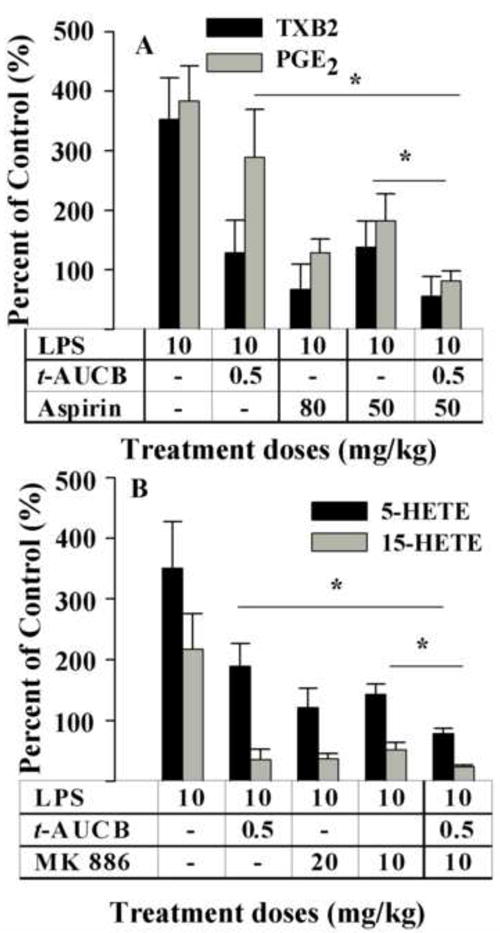Fig. 3.

Dual inhibition of two branches of the AA acid cascade is synergistically effective in decreasing inflammatory mediators. (A) LPS administration led to significant increases in both PGE2 (gray bar) and TXB2 (black bar). t-AUCB is ineffective in significantly reducing PGE2 by itself but when co-administered with a low dose of aspirin led to a synergistic reduction in PGE2 (gray bar) levels. TXB2 (black bar) levels were also reduced by t-AUCB, aspirin, and co-administration of t-AUCB with a lower dose of aspirin. Aspirin decreased the production of TXB2 and PGE2 in a dose-related manner. (B) LPS administration led to significant increases in both 5-HETE (black bar) and 15-HETE (gray bar). t-AUCB, effective by itself, however, when co-administered with MK 886, led to a synergistic decrease in the production of both HETEs. MK 886 decreased the production of 5-HETE 15-HETE in a dose-related manner. These data indicate that co-administration of a low dose of t-AUCB with a therapeutic dose of MK 886 can further reduce the levels of proinflammatory molecules 5-HETE and 15-HETE. The data are depicted as percentage of control mice receiving vehicle without LPS. Control values are TXB2, 4.4 ± 1.4, and PGE2, 0.5 ± 0.1 nM, 5-HETE, 3.4 ± 0.3 nM; 15-HETE, 6.6 ± 1.2 nM. * Significantly different (P > 0.05) determined by ANOVA followed by Tukey’s or Games-Howell’s posthoc comparison test.
